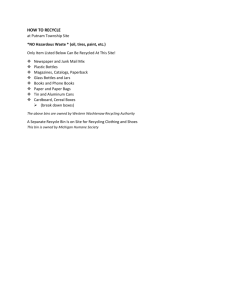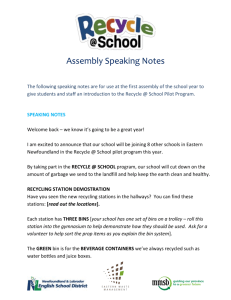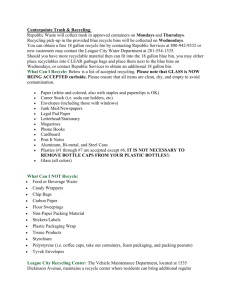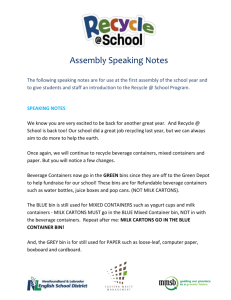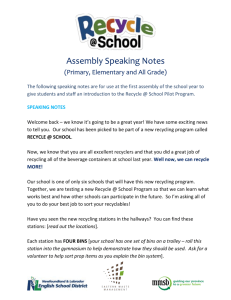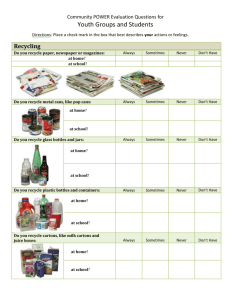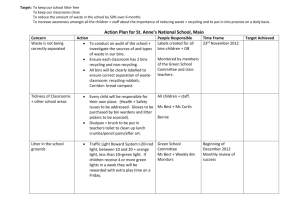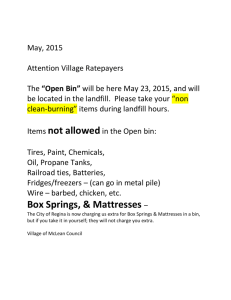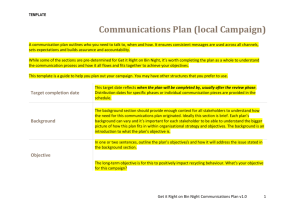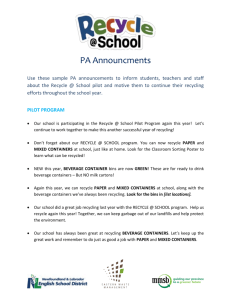not in the beverage container bin.
advertisement
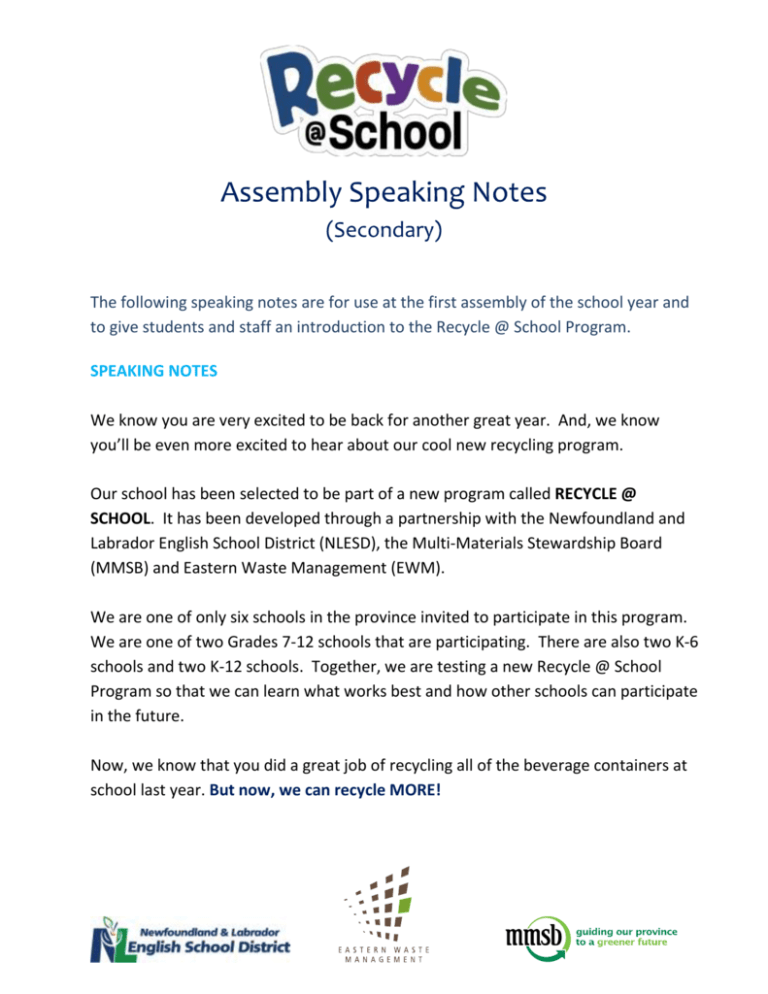
The following speaking notes are for use at the first assembly of the school year and to give students and staff an introduction to the Recycle @ School Program. SPEAKING NOTES We know you are very excited to be back for another great year. And, we know you’ll be even more excited to hear about our cool new recycling program. Our school has been selected to be part of a new program called RECYCLE @ SCHOOL. It has been developed through a partnership with the Newfoundland and Labrador English School District (NLESD), the Multi-Materials Stewardship Board (MMSB) and Eastern Waste Management (EWM). We are one of only six schools in the province invited to participate in this program. We are one of two Grades 7-12 schools that are participating. There are also two K-6 schools and two K-12 schools. Together, we are testing a new Recycle @ School Program so that we can learn what works best and how other schools can participate in the future. Now, we know that you did a great job of recycling all of the beverage containers at school last year. But now, we can recycle MORE! You may have already noticed the new recycling stations and signs throughout the school. We have six stations in total – you can find them [read out the locations]. Each station has FOUR BINS [your school has one set of bins on a trolley – roll this station into the gymnasium to help demonstrate how they should be used. Ask for a volunteer to help sort prop items as you explain the bin system]. The first bin is for the BEVERAGE CONTAINERS we’ve always recycled such as water bottles, juice boxes and pop cans. The second bin is for OTHER (or MIXED) CONTAINERS such as yogurt cups and milk containers – NOW, although milk is a beverage – MILK CARTONS MUST go in the Container bin, NOT in with the beverage containers. Repeat after me: MILK CARTONS GO IN THE OTHER CONTAINER BIN – NOT IN THE BEVERAGE CONTAINER BIN. The third bin is for PAPER such as loose-leaf, computer paper, boxboard and cardboard. There is also a bin for GARBAGE. Some waste cannot be recycled such as plastic cutlery, paper towels, snack wrappers and anything made with Styrofoam – MAKE SURE THEY GO IN THE GARBAGE BIN. In your classroom, you will also find a small grey recycling bin for paper. This will be emptied into the larger bins when full [hold the bin up so the students recognize them when they return to their classroom]. If you are not sure of where an item belongs – check the WASTE SORTING GUIDE in each classroom for a complete list of what should go in each bin. If you are still not sure – put the item in the garbage. It’s very important not to put garbage in the recycling bins. Soon, we will have a team of students who will help teach you what to RECYCLE @ SCHOOL. The Recycle @ School Team will be visiting each homeroom or classroom, as well as the cafeteria to show you how to recycle and to answer any questions. Now, I know we can recycle more than the other schools participating in the program [Crescent Collegiate or Mobile Central High] right? And they’re already saying that primary and elementary students are going to do a better job of sorting their trash… Are we going to let that happen? So what we are asking you to do is STOP [pause in front of the recycling station with container or paper in hand] – and think is this recyclable? Then DROP [place the item in the bin] – your waste in the right bin. Stop and Drop, it’s that simple. By taking part in the RECYCLE @ SCHOOL program, our school will be helping schools across the province learn to set up similar recycling programs. At the same time we’ll be reducing the amount of garbage we send to the landfill and protecting our environment through the resources, water and energy saved as a result of recycling. Do you think we can recycle more? Let’s work together to make this program a great success story for our school. Let’s send the least amount of garbage to the landfill and keep the most recyclables out of the landfill than any other school!
